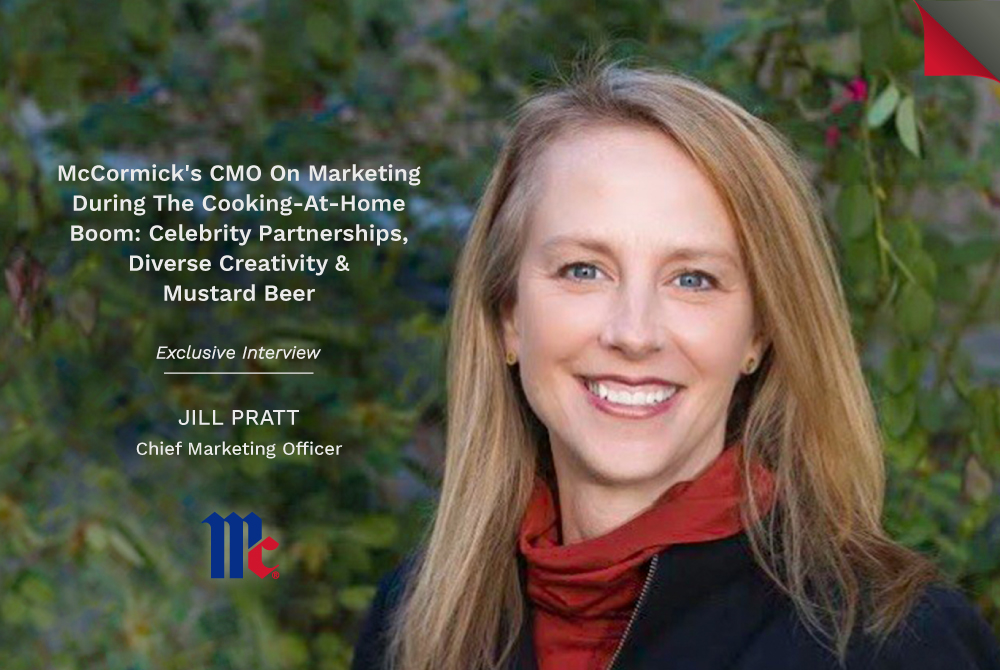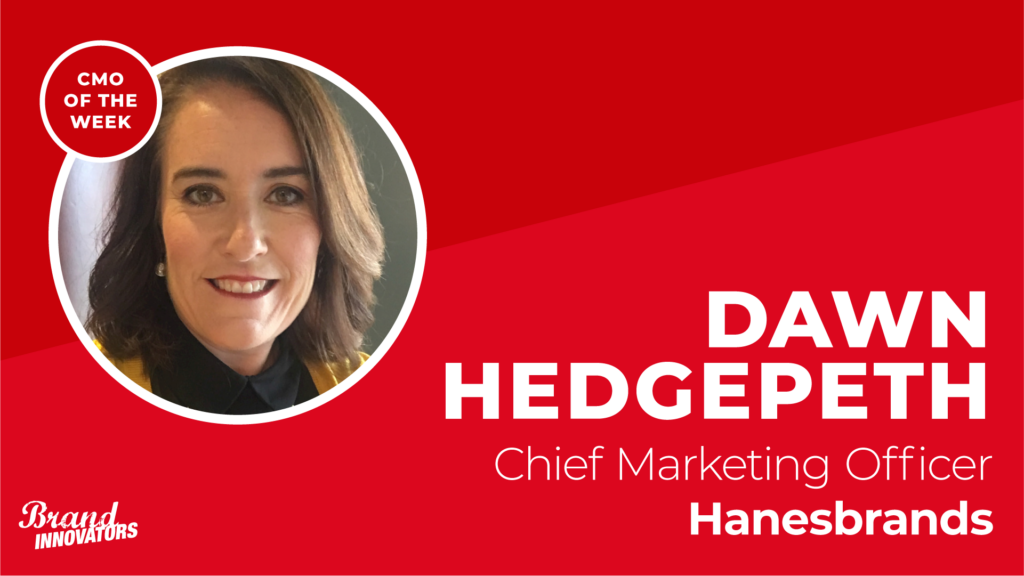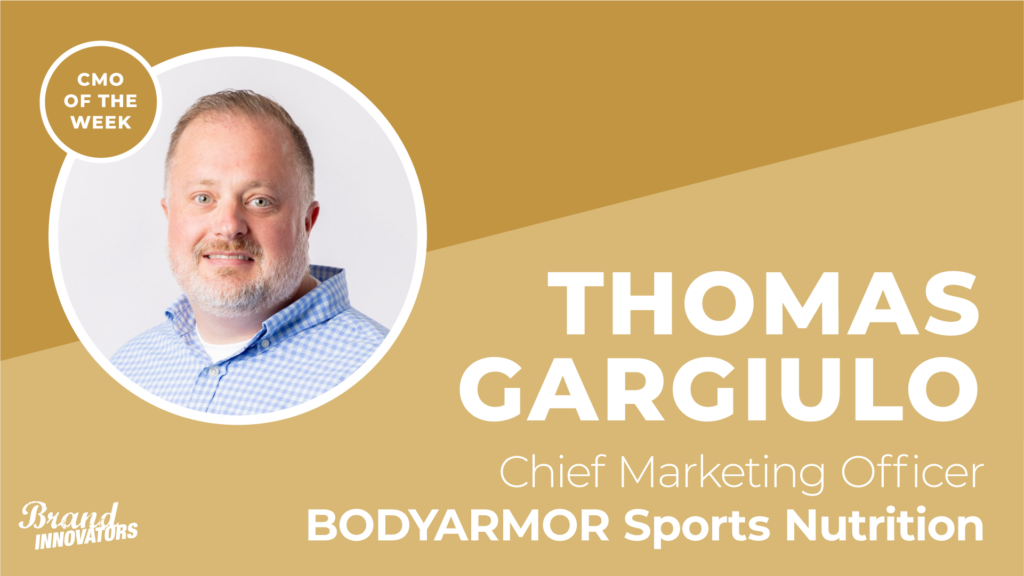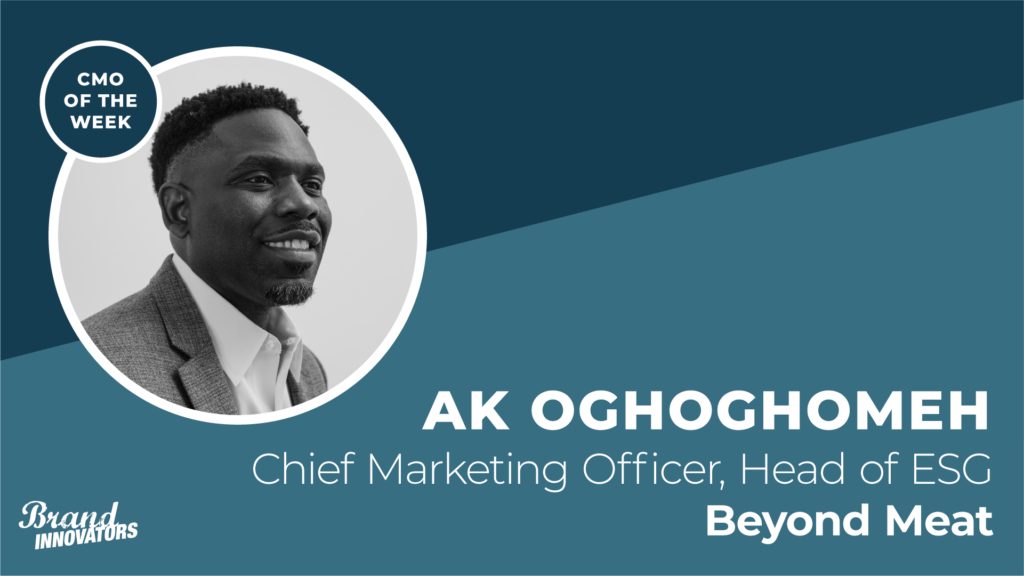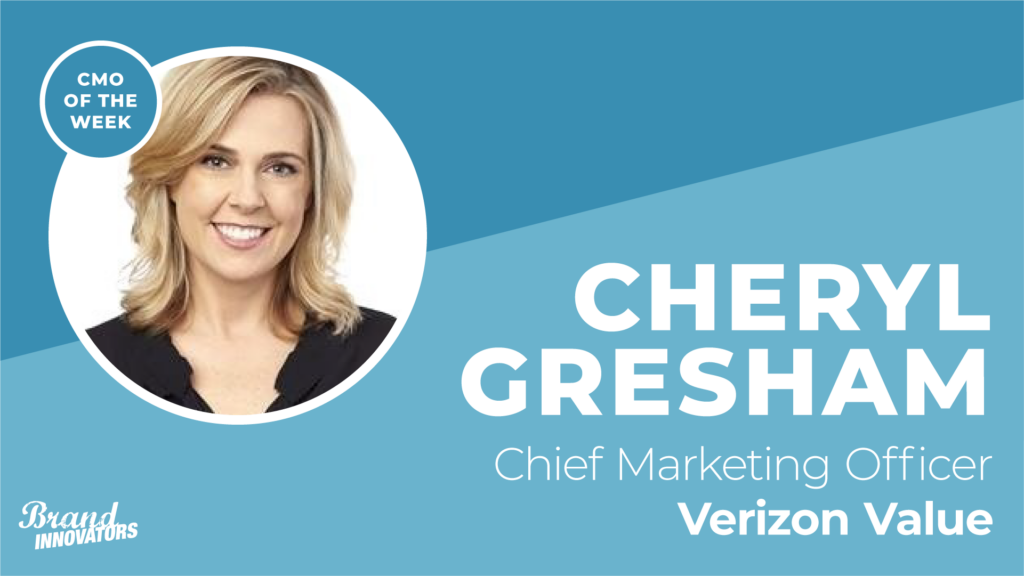With a brand portfolio that includes numerous pantry staples (including French’s, Frank’s RedHot, Lawry’s and dozens of McCormick spices and seasonings), Jill Pratt, Chief Marketing Excellence Officer at McCormick & Company, has had no trouble meeting the demand from the cook-from-home boom that’s been necessitated since COVID-19 sheltering-in-place began in mid-March. In June, the company announced that sales of its products in the Americas increased by 36% year-over-year during the second quarter of 2020, driven by an “unprecedented surge in demand.”
But one challenge she couldn’t have anticipated, like many of us who suddenly found ourselves spending more time than ever in our kitchens, was the temporary shortage of bread. Though Pratt and her teams had already invested in editorial features like a Cooking at Home Q&A section of McCormick’s website to capture a larger share of search traffic around cooking terms, the sudden DIY need for bread recipes prompted one of her first pandemic pivots.
“We had to quickly develop a response to the question, ‘I can’t find bread in the store. I don’t usually make bread from home, but I have to. Oh and by the way, I don’t have yeast,’’ says Pratt. “We were like ‘Oh fabulous, we don’t have a lot of that content.’”
However, Pratt had started staffing up McCormick’s in-house agency in 2018 to add more agility for timely campaigns, and quickly tapped into that team as well as McCormick’s executive chef Kevan Vetter to create a three-part video series that could inspire at-home creativity for novice bread bakers.
“Luckily that need isn’t there anymore, but it was an instant issue at the time and it crystallized how and one of the main things consumers are looking for is some help,” says Pratt. “I think we really found a way to make a deeper connection one on one with our consumers when they had more needs and they had more time [to address them.] They’re willing to interact with brands right now, whereas they may have been busier in the past.”
When she’s not making her favorite McCormick recipes like smoked paprika-roasted salmon with wilted spinach or Mediterranean pasta with fire-roasted tomatoes at home with her family, Pratt has been challenging her teams to push their brands into more unchartered territory. And as she shared with Brand Innovators recently from her home just outside McCormick’s headquarters in Baltimore, that includes rare forays into celebrity partnerships with Drew Barrymore and Eli Manning, successful experiments with TikTok and an unlikely new venture for French’s mustard – craft beer – that’s helped introduce the 116-year-old brand to new audiences. The conversation has been edited for length and clarity.
Brand Innovators: McCormick’s sales in the Americas were up an impressive 36% during your most recent quarter, due to highly increased cooking activity during the nationwide lockdown. Which products and cooking trends drove that growth?
Jill Pratt: We saw two main areas of growth. About 50% of that increase in volume is actually coming from consumers who we wouldn’t consider to be a McCormick loyalist. Cooking, like everything else, is a hobby. You only like to do things that you’re good at, so when you’re forced to do it you suddenly get a little bit better. That’s like a self-reinforcing flywheel. We’re finding people who didn’t consider themselves part of our universe are actually really happy to have that skill and have a control of what’s actually in their food.
The other 50% of that increase came from people who were already cooking a lot. But there’s a difference between cooking three to five times a week and cooking three meals a day, seven days a week, so there’s still a big opportunity for increase there. Our household penetration is up 16%, so we’re seeing people really coming back in the kitchen. And while our products aren’t what you would call stock-up products, they are products you use to flavor those stock-up products like protein. So we’re finding people are buying them and going back and repeating, so our volume has stayed quite high since the beginning of the pandemic.
In the past, we would always talk about how consumers make purchases because they have a recipe that calls for something they didn’t have, or it’s a staple and they’re replenishing. So we’re seeing a lot more from our volume coming from that replenishment of everyday spices like black pepper, oregano, cinnamon. Vanilla has had a huge spike. More of the staples are seeing the highest resurgence, although all the SKUs are pretty much up right now.
What are some COVID-19 relief efforts McCormick has spearheaded since the global spread of the pandemic this spring, and any results or total donations you can share?
McCormick has a history of giving back to the communities that we produce in and we serve. We’ve committed about $10 million this year across a variety of initiatives. There’s restaurant relief, for the food service part of our business. We’ve contributed to restaurant relief in Maryland and New Orleans as well as in Canada where we have significant business presence. We donated to social justice organizations and food banks in over 21 countries.
And we also had a pretty large program in May with Drew Barrymore. She has a strong affinity for No Kid Hungry, and food insecurity overall with children. We also have a strong association with food security across age groups, so we partnered with her because she has a lot of content herself about tacos and how she grew up in California eating lots of tacos and all these great recipes. So we did a virtual Taco Tuesday with her in May, and as part of that we gave $1 million to No Kid Hungry to raise awareness for that organization. We never worked with her before and she was fun and really excited about the partnership. And from a marketing standpoint that campaign generated about 800 million impressions, and a lot of that came from the appreciation for the ways we were giving back to the community.
Drew Barrymore has a daytime talk show launching this fall. Do you have any plans to extend the partnership with her later this year?
We actually haven’t been a big celebrity partnerships brand in the past. But in this time period we’ve found there’s been a lot of authenticity for celebrities in particular who can speak authentically about our cause. With Drew it was around this Taco Tuesday charitable event, but we look forward to having more opportunities to work together in the future.
Something else that was very different for us but proved to be very successful was we started partnering with Eli Manning. Frank’s RedHot has a history of being really involved with sporting events, whether it’s Super Bowl or March Madness or tailgating, we do a lot of second-screen activity during major events to engage with our consumers. Obviously, what happened after Super Bowl this year is there weren’t any major sporting events. We had a bunch of March Madness creative ready to go that never saw the light of day. We were on the lookout with one of our agencies to say, “What is the first time we can do some authentic interaction with sports?” Because it had been two and a half months.
So we identified the Champions of Charity golf events on Memorial Day weekend. Golf Is not typically a Frank’s sport, but it had Tiger Woods, Phil Mickelson, Peyton Manning and Tom Brady, and they were having some friendly competition. As part of that we partnered with Eli Manning who was going to, believe it or not, launch his Twitter account for the first time during that golf outing, and he was going to help support his brother and trash talk the competition. So we worked with him during that event as part of what we called “Tweet Some Heat.” He’s got a really approachable, tongue-in-cheek type humor that fits in really well with Frank’s – funny but never mean.
We were the number-one brand talked about on Twitter during that match, and we were not an actual sponsor. As part of that we also partnered with T.G.I. Friday’s to give away buffalo wings to ten fans for every hole. And we are continuing to work with Eli for the rest of this year. We’ll have some really fun video creative coming out with him that’s really fantastic, he’s just got a great personality for the brand.
Your CEO Lawrence Kurzius detailed McCormick’s commitments to protect and empower Black Lives in June. Any progress you can report since that initial commitment in terms of talent recruitment, diversity in your creative and other measurable milestones?
There’s a lot of commitment from an employee standpoint — how we look at training practices, and mentor/mentee relationships, and identifying leaders. We’re making sure that it’s a priority and putting in the work to measure against that.
From a consumer standpoint, we have certain brands that resonate more with the Black community and the Hispanic community, and certain that are more general market. We recently worked with Tabitha Brown, who’s an African-American vegan chef with a huge presence on TikTok, and it was our most successful partnership from an engagement standpoint. So I think we learned to make sure we’re intentional in working with diverse talent. And when you do it that way it not only generates performance but it also resonates.
We’re also investing more with some brands like Lawry’s, who have a heavy African-American affinity, and have worked with African-American talent in the past. So we want to make sure we have the research and understanding to make sure we’re talking to folks in the right way. Instead of being dedicated by product, we’re dedicated by Black community as well as Hispanic to make sure we have an intentional spend against that. We have always looked at the talent in our ads to make sure it’s representative, so now we’re going to use that across our corporate and employee thought process so there’s no unintentional bias that works its way in.
As cooking activity soars across the globe, so does the appetite for cooking content. Food Network recently became a top 10-rated network, and other distributors have ramped up their food programming on both linear and digital TV channels. How are you adjusting your media mix to follow this new food enthusiast audience?
Right now is kind of like a holiday time in terms of how people are learning about food. So we’re investing right now where we can get the most return. I would say our media mix hasn’t changed dramatically but because linear tv is down and connected device TV is up significantly, there’s some shifting within that. So it’s still TV and video communications, but more connected device TVs and less linear TV.
We certainly have a lot of digital within our plan. We’re well above industry averages — 60% from a working media standpoint — and that continues to perform. And on our owned properties, traffic has doubled and about half of that traffic is organic. We’re not paying for it, but we’re making sure we’re well-represented from a paid search standpoint.
Are you also shifting the tone of some of your creative to better represent the current moment?
We have several spots around our campaign idea “It’s Going To Be Great,” which launched in February of this year. The good news is it’s all about the time, love and care that goes into making meals, and inspiring people to make those and bring people together which was what the pandemic coincidentally has helped enable. We tested it and it ended up scoring well.
But the holiday version of that ad is the same sentiment in a different setting. The original one that we shot was all about bringing people together. You’ve got this giant table, the bustle, the happiness but also stress of making that holiday meal for everybody. We can’t air that because that’s not going to be the norm this year.
So we looked at all the footage, and thankfully we had a lot of it, and we recut it to say “bring your mother’s favorite mashed potato recipe, your aunt’s favorite asparagus recipe, and all the dishes are going to make it to the table even if the people cannot.” So we used the same imagery, recut to be more individual dishes. It’s still a very similar sentiment but it needs to be right right now. It needs to not be tone deaf.
How are you looking at emerging platforms like TikTok for some of your brands? Are they brand-friendly, and are you finding success?
We are on TikTok, I would say we’re still more experimental than a huge part of our plan. We have a learning from a Frank’s activation about how people are using Frank’s at home to help them work out called #FitWithFrank’s. When we first started being active there, we just had our internal and culinary team produce their own videos and push them live to see what organically would work, and then we took that in and did some brand activations with influencers like @itsjosiah and @viralkyle.
Some of your brands have been around for over a century. How are you keeping them with fresh with new partnerships and recipes?
We’ve been doing a lot of work recently around what we call “transformational creativity.” We wanted to push our brands a little outside of our comfort zone in ways we think are sufficiently interesting but aren’t that expensive. Last year we celebrated National Mustard Day by partnering with Coolhaus on a mustard ice cream recipe. People were on the Today Show talking about it, and how it actually tasted pretty good.
Of course, the worst thing that happens when something’s successful is how you top it. So for this year’s National Mustard Day we created our own beer. We partnered with Oskar Blues, a craft beer manufacturer, and we created a pretty delicious mustard beer. We got over 2 billion earned impressions, and we even got on the “Jimmy Kimmel” show where they were like, “What is this?”
So we’re trying to find a way with French’s, which is a brand that’s been around forever and is considered to be a pantry staple but maybe not as exciting and culinary. So it was us taking the feeling of that brand and pushing it to make it more interesting. By taking the mustard flavor and putting it in unexpected ways, we’re finding a way to stretch people’s definition of how it can be used. And with 2 billion earned impressions, that’s several million dollars in media for a program that cost a couple hundred thousand dollars to execute. We’re trying to find ways to push the boundaries and the fun when we talk about our brands.
Andrew Hampp is an entertainment marketing consultant for Brand Innovators and the founder of consultancy 1803 LLC, based in Berkeley, California.
